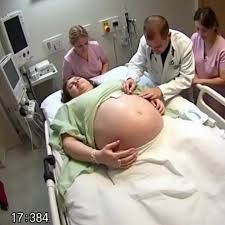By 2025 standards, the freak shows of the 19th and early 20th centuries are among history’s darkest forms of entertainment — spectacles that exploited human difference for profit. One of the most tragic stories from that era is that of Mary Ann Bevan, a British nurse and mother who became cruelly branded “The Ugliest Woman in the World.” Her journey from devoted caregiver to circus attraction exposes not only society’s ignorance about physical disorders like acromegaly but also the extraordinary strength of a woman determined to provide for her children against impossible odds.
Born in 1874 in Plaistow, East London, Mary Ann was one of eight children in a working-class family. Bright and compassionate, she became a nurse in 1894 and later married Thomas Bevan, with whom she had four children. Their life was modest but happy until tragedy struck — Thomas died suddenly of a stroke, leaving Mary Ann widowed and financially destitute. Around the same time, she began developing symptoms of acromegaly, a rare hormonal disorder that enlarged her face, hands, and feet. Medical science then offered no treatment. As her features changed, she lost her job opportunities and became a target of fear and ridicule.
Desperate to feed her family, Mary Ann answered a newspaper advertisement seeking “the ugliest woman” for a traveling show — an offer from an agent for Barnum & Bailey Circus. She reluctantly joined, earning enough to send her children to school and secure their futures. In 1920, she was brought to New York’s Dreamland Circus at Coney Island, where newspapers sensationalized her as “The Ugliest Woman on Earth.” Though the crowds came to laugh, some recognized the cruelty behind the spectacle. Renowned neurosurgeon Harvey Cushing publicly condemned her exploitation, revealing she was suffering from acromegaly — not deserving of mockery but of compassion.
Behind the stage lights and forced smiles, Mary Ann endured humiliation with quiet resilience. She earned what would equal nearly $600,000 today, every cent sent home for her children’s education. She continued performing until her death in 1933, aged 59, and was buried in her native England, as she had wished. History remembers her as more than her cruel nickname — she was a mother who sacrificed her dignity to give her children hope. Mary Ann Bevan’s life stands as a lasting reminder that humanity’s worth is never defined by appearance but by courage, love, and the grace to endure.





